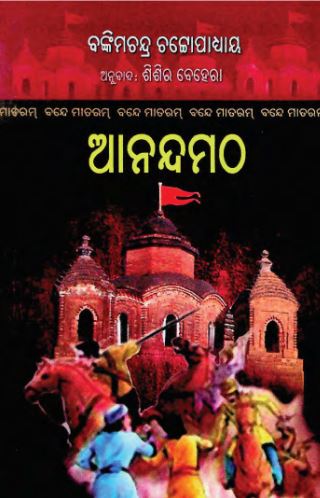Anandamatha, originally written by Bankim Chandra Chattopadhaya, holds a preeminent place in the canon of Indian literature. First published in 1882, the novel delves deep into themes of patriotism, resistance, and the struggle for national identity during a period marked by colonial oppression. The Odia translation by Sisir Behera, published in 2014, brings this monumental work to a wider audience, allowing readers to engage with its profound ideas and historical significance in a regional context.
Set against the backdrop of the 18th-century Bengal, “Anandamatha” narrates the story of the Sannyasi Rebellion, where a group of ascetics rises against the British colonial administration. At its heart, the novel celebrates the theme of nationalism, encapsulating the fervor of a people striving for freedom and self-determination. The protagonist, Bhavananda, emerges as a symbol of the fight against colonial tyranny, embodying the aspirations and struggles of his fellow countrymen.
The novel opens with a breathtaking depiction of the lush landscapes of Bengal, describing its culture and the simplicity of its people. Through vivid imagery and rich characterization, Bankim Chandra sets the stage for a narrative that blends historical fiction with philosophical inquiry. The characters in “Anandamatha” are not mere actors in the unfolding drama; they are embodiments of ideals, emotions, and the spiritual quest for liberty.
One of the most significant contributions of “Anandamatha” is its role in the cultivation of Indian nationalism. Through rousing speeches and passionate dialogues, the text serves as a clarion call to awaken the spirit of resistance and unity among Indians against colonial rule. Bankim’s famous hymn, “Vande Mataram,” which extols the motherland, plays a pivotal role in the narrative, infusing it with a sense of divine reverence and love for the country. “Vande Mataram” transcends mere lyrics to become a symbol of patriotic fervor, igniting the hearts of countless Indians regardless of caste, creed, or religion.
The novel also examines the duality of spiritual and material existence. The Sannyasis, as ascetic warriors, reflect the profound philosophy that intertwines spirituality with action. Through Bhavananda and his companions, the reader is invited to consider the essence of sacrifice, duty, and service as fundamental tenets of nationalism. Their journey is not only a fight against external oppression but also an inner quest for enlightenment and truth.
In Sisir Behera’s adept translation, the lyrical beauty of Bankim’s prose is preserved, enabling Odia readers to experience the full spectrum of emotions and ideas that “Anandamatha” conveys. Behera’s translation makes the text accessible, allowing it to resonate with contemporary audiences who are grappling with questions of identity, belonging, and resistance.
Anandamatha is more than just a historical novel; it is a powerful manifesto for freedom and an exploration of the human spirit’s resilience in the face of adversity. Through its compelling narrative and profound themes, Bankim Chandra Chattopadhaya’s work continues to inspire and evoke a sense of patriotism and pride in one’s cultural heritage. As readers navigate through this remarkable tale, they are not only drawn into the rich tapestry of Bengal’s history but are also challenged to reflect on their roles in the ongoing journey toward national identity and social justice.
Books Info
| Books name | Anandamatha |
| Author | Bankim Chandra Chattopadhaya; Sisir Behera, Tr. |
| No Of pages | 142 |
| Publisher | Friend’s Publishers |
| Publication | 2014 |
| Printed At | The Laxmi Press |
| Distributor | NA |

